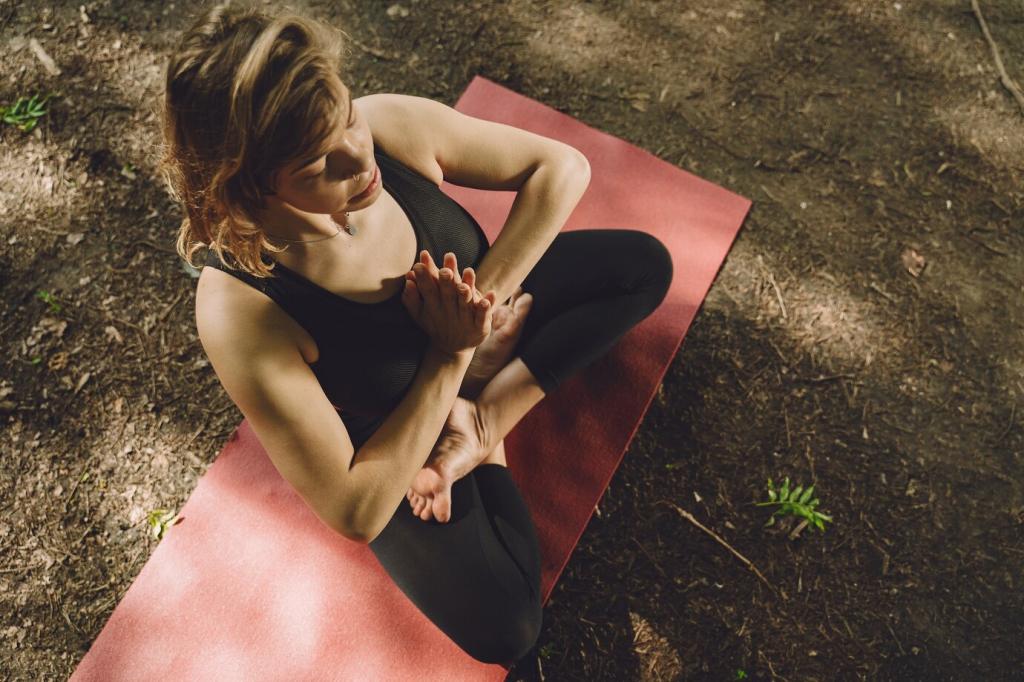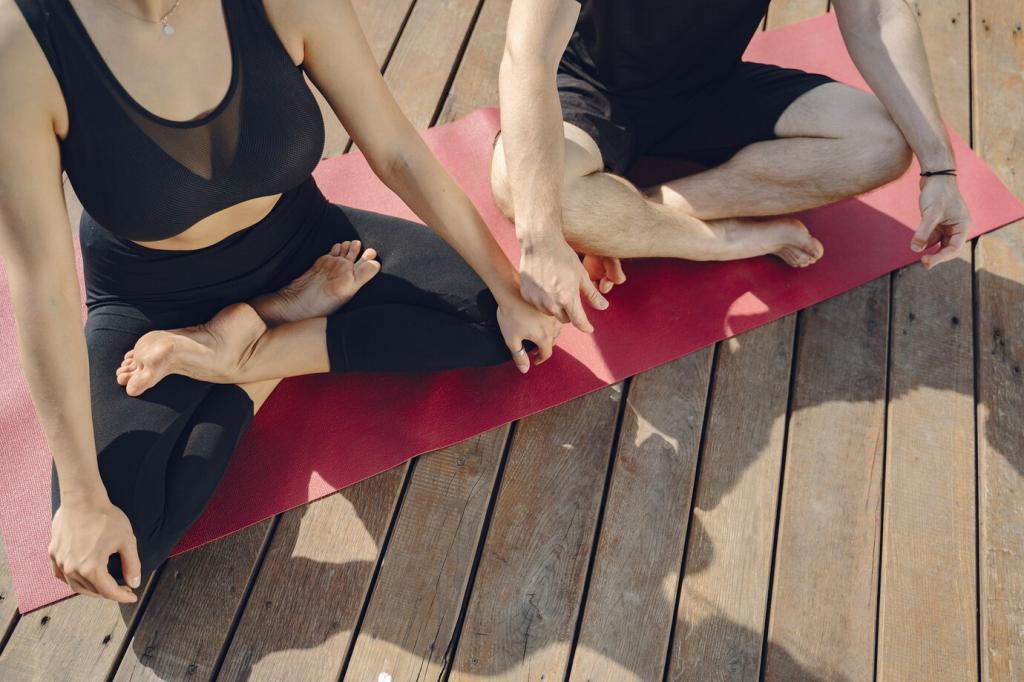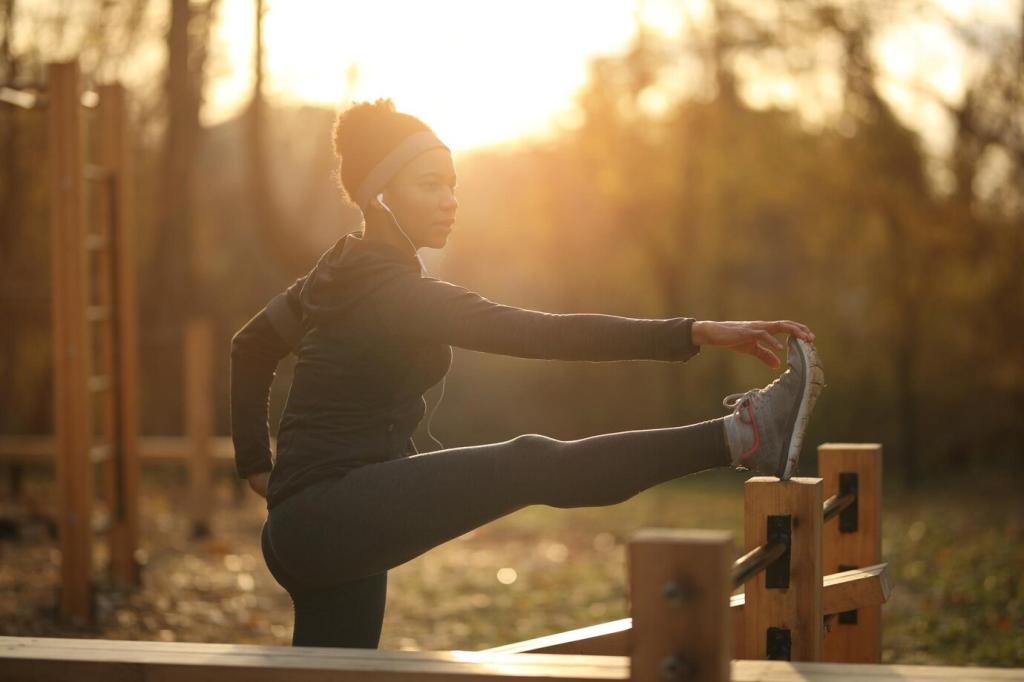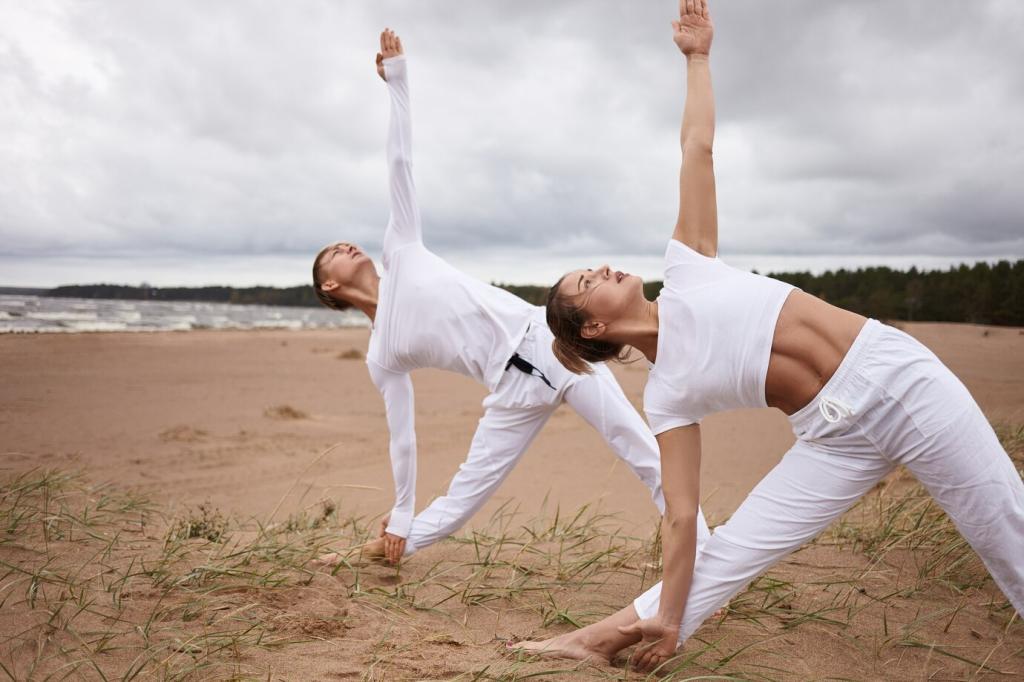Minimal Equipment, Maximum Results
Swings teach hip power, goblet squats build leg strength, and windmills connect shoulder stability with hamstrings and obliques. Keep the bell close, prioritize posture, and let breath set cadence. Minimal tools, maximal attention—that is real practice.
Minimal Equipment, Maximum Results
Bands add scalable tension for pulls, presses, and lateral steps. Sliders turn core work into moving planks and controlled rollouts. They fit in any room, travel easily, and challenge control at low impact. What slider drill should we film next?






